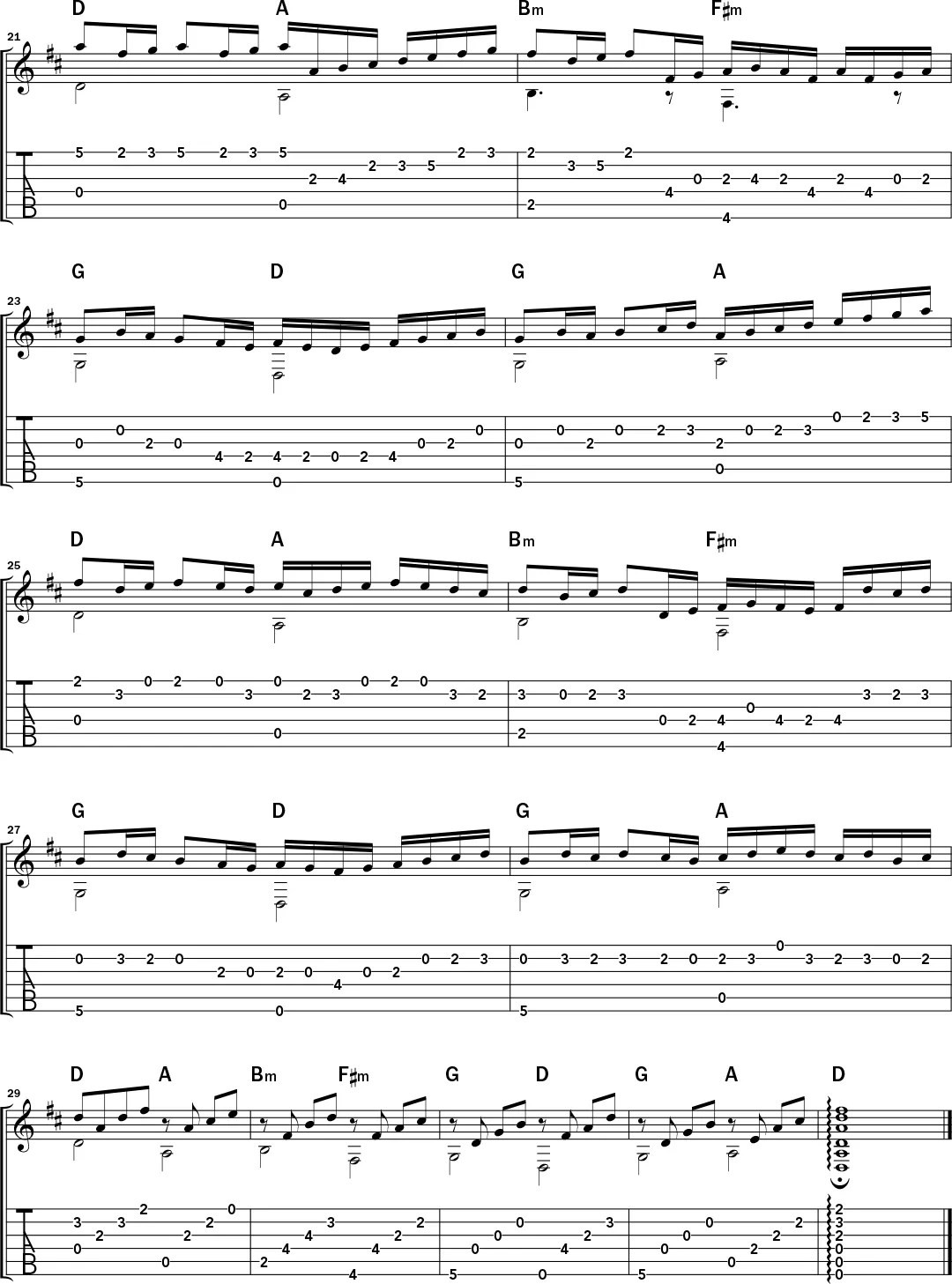Pachelbel’s Canon in D, often simply known as “Canon in D,” stands as a timeless piece of classical music. Its instantly recognizable and elegant chord progression has cemented its place as a favorite for weddings and formal events worldwide. For guitarists, learning Canon In D Guitar Chords opens up a world of musical possibilities, allowing you to play this beautiful piece on your instrument.
This guide provides a concise and accessible arrangement of Canon in D for guitar, perfect for both steel-string and nylon-string guitars. Whether you’re preparing to play at a wedding or simply expanding your guitar repertoire, understanding these chords is a valuable skill.
The original piece is written in the key of D Major, and this guitar arrangement leverages dropped-D tuning. Dropped-D tuning, where the lowest string (E) is tuned down to D, enriches the sound, particularly on D chords, adding depth and resonance. The chord progression that defines Canon in D – D–A–Bm–F#m–G–D–G–A – repeats gracefully throughout the piece, providing a harmonic foundation for the melody. Each measure typically contains two chords, creating a flowing and predictable rhythm.
The beauty of Canon in D lies not only in its chords but also in its melodic variations. On guitar, these variations are generally played with standard fingerings, making it relatively accessible for intermediate players. Remember the tip to use your fourth finger for the low G note; this often helps the melody notes fall into place more naturally. Certain sections, particularly bars 14–15 and 17–20, present a slight increase in complexity, requiring some finger dexterity to navigate the melody. Don’t hesitate to utilize the suggested fingerings provided in sheet music or explore fingerings that feel most comfortable and efficient for your playing style.
 Pachelbel's Canon in D guitar chords diagram, showing finger positions for playing the melody
Pachelbel's Canon in D guitar chords diagram, showing finger positions for playing the melody
Learning Canon in D guitar chords is a rewarding endeavor for any guitarist. Its popularity ensures it’s a piece that will be appreciated by audiences, and its structure provides a solid foundation for understanding chord progressions and melody in music. With a little practice and attention to fingerings, you’ll be able to bring the elegance of Pachelbel’s Canon in D to life on your guitar.
